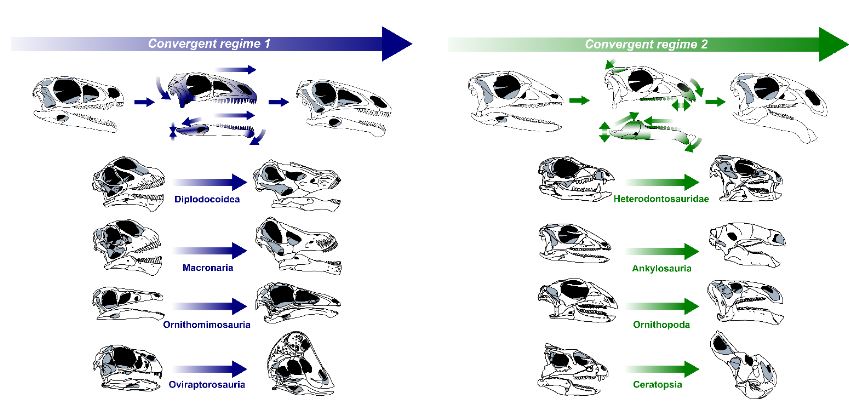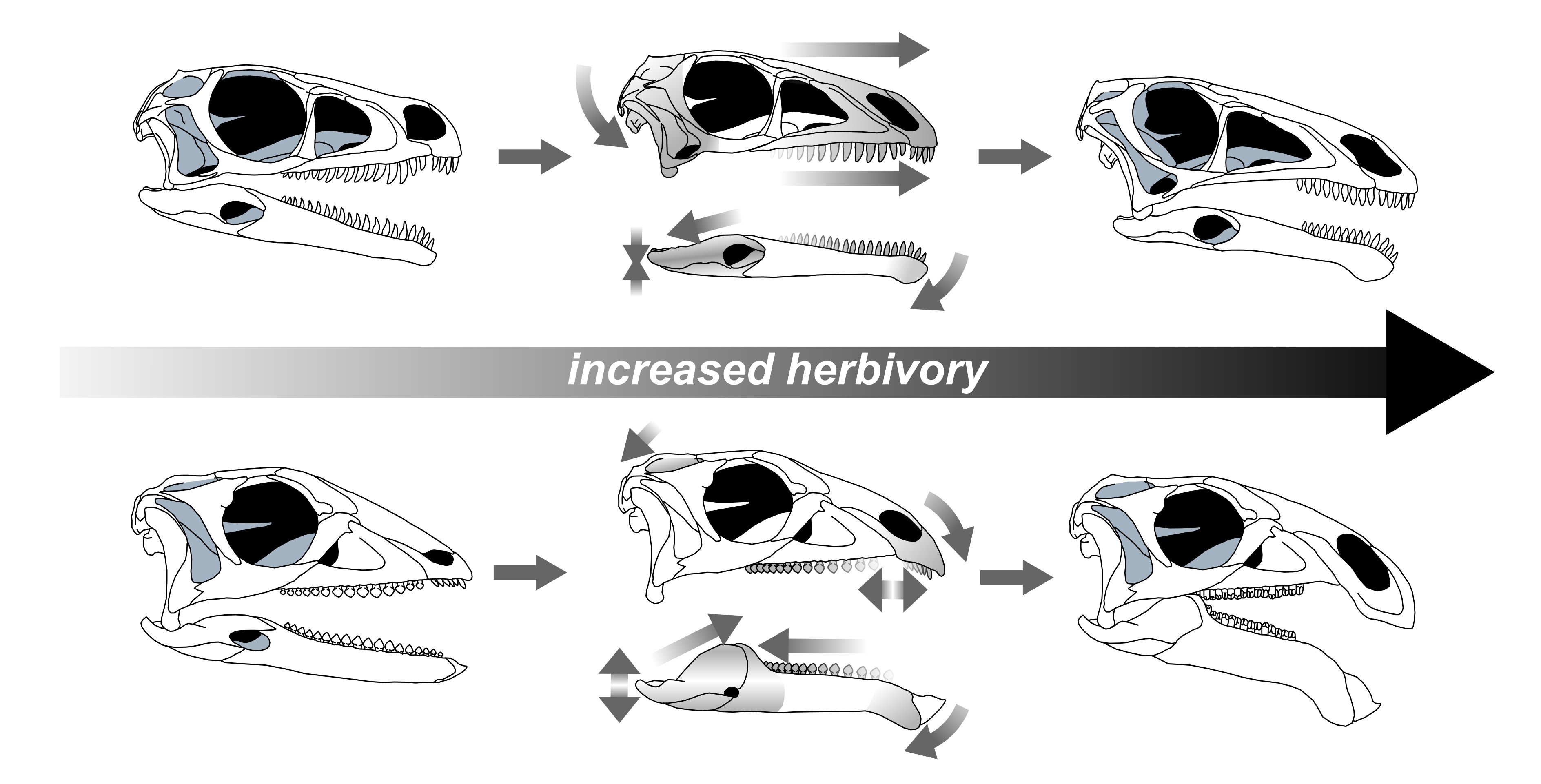Herbivorous dinosaurs evolved many times during the 180 million-year Mesozoic era, and while they didn’t all evolve to chew, swallow, and digest their food in the same way, a few specific strategies appeared time and time again. An investigation of the skulls of 160 non-avian dinosaurs revealed the evolution of common traits in the skulls and teeth of plant-eating members of otherwise very different families of these extinct reptiles. These new examples of convergent evolution in plant-eating dinosaurs appear December 5 in the journal Current Biology.
“People often think of dinosaurs as a swansong for extinction or that they were a failed species. But they were actually extremely successful in terms of how different species’ anatomies evolved–particularly in herbivores,” says co-senior author David J. Button, a paleontologist at the Natural History Museum, London.

[ad_336]
By looking at herbivorous and carnivorous dinosaur skulls, Button and co-senior author Lindsay Zanno , a professor at North Carolina State University and the head of paleontology at the North Carolina Museum of Natural Sciences, found that while there are many ways for dinosaurs that eat similar foods to evolve, some traits reappear during evolution, even in unrelated species.
Herbivorous dinosaurs came in all shapes and sizes. Some exhibited dull, flat teeth like horses, while others had beaked faces like tortoises; some developed towering necks like giraffes, while others mimicked the short and stout build of a rhino. “Nonetheless, we see the evolution of common traits in the skull between these otherwise very different herbivorous dinosaur groups,” explains Button.
“For example, both the ostrich-like ornithomimosaurs and giant titanosaurs independently evolved elongate skulls and weaker bites, whereas the horned ceratopsians and gazelle-like ornithopods sported more powerful jaws and grinding teeth,” he says. These are results of convergent evolution, where adaptation to a diet of plants led to the evolution of common characters in different dinosaur groups.
The researchers hypothesized that some traits would be most common in plant-eaters. Slow-moving dinosaurs with small heads and dull teeth would likely have a difficult time wrapping their jaws around the neck of another dinosaur, in the way a carnivore like the Tyrannosaurus is thought to have done with ease. Instead, eating plants poses other challenges, such as grinding down tough plant stems.

“There’s a tradeoff between biting speed and biting efficiency,” says Button. “If you’re a herbivorous animal, you don’t really need speed because plants don’t move very fast.”
Some of the results of this functional analysis surprised the researchers, however. That was the case when investigating the eating habits of ankylosaurs, armored, armadillo-like plant-eating dinosaurs with small teeth and a large stomach cavity. Researchers previously thought dinosaurs with these traits usually swallowed their food nearly whole and let their gut break it down. “In our results, we found that ankylosaurs actually may have chewed their food more thoroughly than is often thought. So, that was interesting,” says Button.
[rand_post]
In the future, Button and Zanno hope to look at the entire skeleton of herbivorous dinosaurs for similar, reoccurring traits. They also plan to expand this work to better understand predominate traits in carnivores, though Button admits plant-eaters will always be his favorite dinosaurs to study.
“People think that carnivorous dinosaurs are super exciting and cool because they run fast, and kill stuff,” he says. “But I think the plant-eating dinosaurs evolved in much more interesting and sophisticated ways. That’s what makes this work so exciting.”